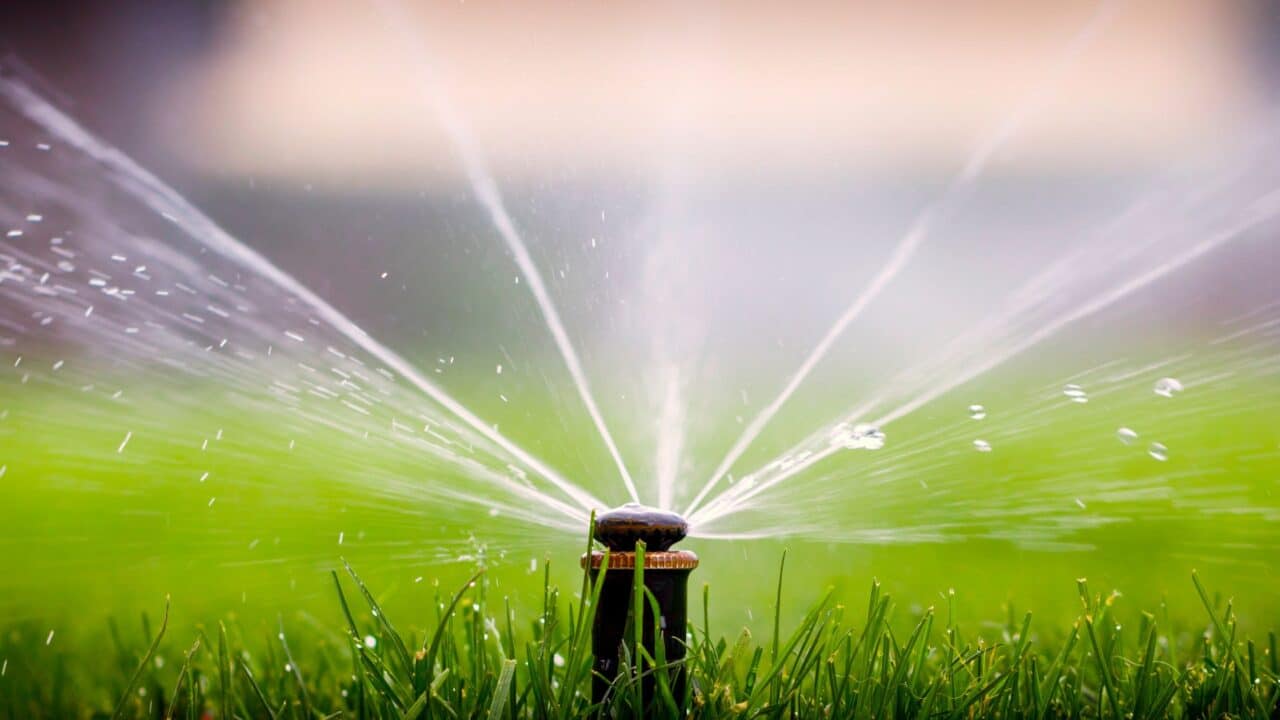How to Water Your Lawn the Right Way
Watering your lawn might seem straightforward, but doing it correctly can make the difference between a thriving, green yard and a patchy, stressed lawn. This guide answers all your questions about how to water your lawn the right way, including tips on using rainwater instead of tap water to keep your grass healthier and more sustainable.
Why Watering Your Lawn Correctly Matters
Watering your lawn isn’t just about keeping it green—it’s about creating a strong, resilient, and sustainable outdoor space. The way you water directly impacts your lawn’s health, appearance, and environmental footprint.
Encourages Deep, Strong Roots
A well-hydrated lawn starts from the ground up. Deep watering promotes root growth, making your grass more resistant to drought, pests, and foot traffic. Instead of shallow daily watering, aim for deep soaking sessions once or twice a week to build a tougher, more self-sufficient lawn.
Prevents Overwatering and Lawn Diseases
Too much water can do more harm than good. Overwatering leads to waterlogged soil, increasing the risk of root rot, fungal infections, and weak, shallow roots that struggle in heat. To avoid this, use a simple soil moisture test to determine when your lawn truly needs water.
Saves Money and Conserves Resources
Smart watering isn’t just good for your lawn—it’s good for your wallet. Efficient watering cuts down on your water bill and prevents unnecessary waste. Tools like rain gauges and smart sprinkler systems ensure your lawn gets just the right amount of water at the right time.
Protects Local Waterways and the Environment
Excess runoff from overwatering can wash fertilizers and pollutants into nearby rivers and lakes, harming local ecosystems. By watering correctly, you help reduce this runoff, keeping your community’s water supply cleaner and healthier.
Boosts Lawn Health and Curb Appeal
A well-watered lawn stays lush, vibrant, and uniform, enhancing the overall beauty of your home. Following a consistent watering schedule helps prevent brown patches, thinning grass, and unsightly dry spots, ensuring your yard looks its best year-round.
Adapts to Local Climate and Soil Conditions
Lawn care isn’t one-size-fits-all. Adjusting your watering habits based on Northeast Ohio’s climate and soil type makes a big difference. For instance, clay-heavy soils retain moisture longer, requiring less frequent but deeper watering sessions to prevent runoff and ensure proper absorption.
How Much Water Does Your Lawn Need?
On average, lawns need about 1 to 1.5 inches of water per week, including rainfall. But what does 1 inch of water actually mean?
Watering Can Method
- 1 inch of water equals roughly 0.6 gallons per square foot of lawn area.
- To measure a square foot of lawn: Mark out a 12-inch by 12-inch section using a ruler, piece of wood, or a measuring tape.
- To apply the right amount: Take about 0.5 gallons of water and evenly spread it over that square foot. This simulates what 1 inch of rain would provide.
- For a larger section: If you have a 20×25 ft lawn (500 sq. ft.), you would need approximately 300 gallons of water (500 sq. ft. × 0.6 gallons per sq. ft.) per week to reach 1 inch of coverage.
Sprinkler Method
If you’re using a sprinkler, here’s how to measure and ensure you’re providing 1 inch of water:
- Use a rain gauge or tuna can: Place several flat-bottomed containers (like tuna cans or shallow bowls) around your lawn. Run the sprinkler and measure how long it takes to fill them to 1 inch. That’s your watering time per session.
- Check for even coverage: Place multiple cans in different areas to ensure your sprinkler is distributing water evenly. If some areas collect more water than others, adjust your sprinkler placement.
- Use the screwdriver test: After watering, push a screwdriver or soil probe into the ground. If it goes in easily 6 inches deep, your lawn has received enough water. If not, continue watering in short increments and retest.
- Water in deep, infrequent sessions: Instead of watering a little every day, aim for two or three deep watering sessions per week to encourage strong root growth and drought resistance.
Why Rainwater Is Better Than Tap Water
Using rainwater to water your lawn isn’t just good for the environment—it’s also better for your grass, soil, and wallet. Here’s why:
The Benefits of Rainwater for Your Lawn
- No Harsh Chemicals – Unlike tap water, which often contains chlorine, fluoride, and other additives, rainwater is naturally pure. These chemicals can build up in the soil over time, potentially harming beneficial microbes that support healthy plant growth.
- Nutrient-Rich Water – Rainwater naturally contains nitrates, which act as a mild fertilizer that promotes strong, vibrant grass growth. This gives your lawn a natural boost without synthetic additives.
- Cost Savings – Harvesting rainwater helps reduce your water bill and lessens dependence on municipal water, making it a budget-friendly and sustainable choice.
How to Collect and Use Rainwater for Your Lawn
- Install a Rain Barrel – Place a rain barrel under your downspouts to collect runoff from your roof. A fine mesh cover will keep debris and insects out.
- Scale Up for Larger Lawns – If you have a big yard, consider multiple barrels or a larger rainwater harvesting system to store more water.
- Use Proper Storage – Always store rainwater in clean, covered containers to prevent mosquito breeding and contamination.
- Distribute Water Efficiently – Attach a hose or soaker system to your rain barrel for easy, controlled watering that mimics natural rainfall.
When Is the Best Time to Water?
Timing matters when it comes to lawn watering. Watering at the right time ensures maximum absorption, prevents waste, and reduces the risk of lawn diseases.
Best Time: Early Morning (5 AM – 10 AM)
- Cooler temperatures allow water to soak into the soil before the sun causes evaporation.
- Grass blades dry quickly, reducing the risk of fungal growth and lawn diseases.
- Less wind interference ensures even water distribution.
Times to Avoid
🚫 Midday (10 AM – 4 PM) – Water evaporates too quickly in the heat, meaning less water reaches the roots.
🚫 Evening (After 6 PM) – Water sitting on grass overnight creates ideal conditions for fungi and disease to thrive.
🔹 Pro Tip: If morning watering isn’t possible, late afternoon (4 PM – 6 PM) is your next best option—early enough for the grass to dry before nightfall.
What Equipment Should You Use?
Choosing the right watering tools ensures even coverage and efficient use of water:
- Sprinklers:
- Rotating sprinklers: Great for large lawns.
- Oscillating sprinklers: Best for rectangular areas.
- Smart sprinklers: Adjust automatically based on weather conditions.
- Soaker Hoses: Efficient for watering specific zones.
- Drip Irrigation: Excellent for precise watering near flower beds or newly planted grass.
Signs You’re Watering Incorrectly
- Overwatering Signs:
- Mushy soil or water pooling on the surface.
- Grass turning yellow or brown due to root rot.
- Increase in weeds or pests like mushrooms.
- Underwatering Signs:
- Grass blades curl or turn blue-gray.
- Footprints remain visible after walking on the lawn.
- Soil is dry and hard to the touch.
How to Adjust Watering Based on Weather
- Rainy Periods: Reduce or skip watering if rainfall meets the weekly 1–1.5-inch requirement.
- Hot and Dry Conditions: Increase watering frequency but stick to deep, infrequent watering.
- Windy Days: Avoid watering as wind can blow water away from your lawn.
Do You Need to Water New Lawns Differently?
- Sod: Water daily for the first two weeks to keep the roots moist while they establish.
- Seed: Lightly water 2–3 times per day to keep the topsoil consistently moist.
- Once Established: Transition to deep, infrequent watering after 3–4 weeks.
Can You Overwater Your Lawn?
Yes! Overwatering is one of the most common lawn care mistakes and can cause:
- Root rot and fungal diseases.
- Shallow root growth, making the lawn less drought-tolerant.
- Wasted water and increased water bills.
How to Water a Sloped Lawn
Watering sloped areas can lead to runoff if not done carefully:
- Use a soaker hose or low-flow sprinkler to apply water slowly.
- Water in short cycles (e.g., 10 minutes, then wait 30 minutes) to allow absorption before adding more.
Should You Water During a Drought?
In drought conditions, prioritize keeping your lawn alive rather than perfectly green:
- Dormant Grass: Needs about ½ inch of water every 2–3 weeks to stay alive.
- Water Restrictions: Focus on high-traffic areas or spots where the grass is most visible.
Steps to Water Your Lawn the Right Way
- Measure Water Needs: Aim for 1–1.5 inches per week, using rain gauges to track rainfall.
- Choose the Right Time: Water in the early morning to minimize evaporation and disease risk.
- Use the Right Tools: Select sprinklers, soaker hoses, or rain barrels for efficient watering.
- Water Deeply: Ensure water reaches 6–8 inches into the soil.
- Monitor and Adjust: Check the soil and grass for signs of over- or under-watering.
- Leverage Rainwater: Harvest rainwater to avoid chemicals in tap water and save money.
Final Thoughts: Make Watering Part of a Holistic Lawn Care Routine
Watering is just one piece of the lawn care puzzle. Combine proper watering with fertilizing, mowing, aeration, and dethatching to create a lawn that’s as healthy as it is beautiful. For sustainable and chemical-free watering, start collecting rainwater today—it’s better for your lawn, the environment, and your wallet. With these tips, even a novice can master the art of watering and grow a lawn to be proud of. If you would rather have us come take care of all your lawn care needs, that is always ok too!

